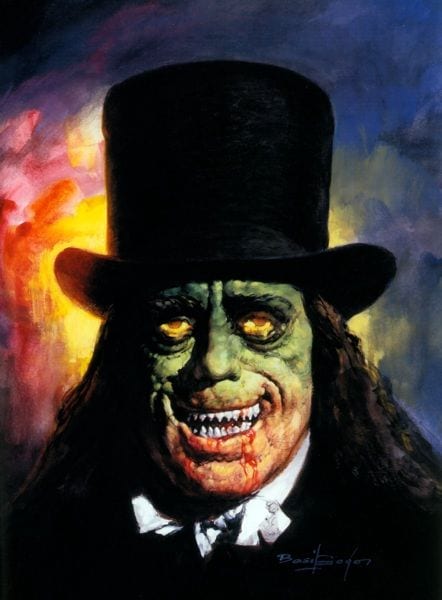Today on the site, Brian Nicholson reviews the second collection of Farel Dalrymple's Pop Gun War.
Farel Dalrymple is treated as an eccentric within the mainstream comics industry. His most high-profile work within the realm of work-for-hire was illustrating Jonathan Lethem's revival of Omega the Unknown for Marvel Comics. His style telegraphs traces of the 1970s house style of John Buscema's How To Draw Comics The Marvel Way while still having enough arthouse quirk that it can be sold to a New Yorker-reading audience interested in learning more about graphic novels. He also drew a few issues of Brandon Graham's revival of the Rob Liefeld character Prophet: When prevailed upon, his work is capable of maximalist detail, and can conjure up the same drawing-centered approach to science fiction found in the pages of a vintage issue of Heavy Metal. These disparate skills are all on display in the comics that Dalrymple writes for himself, which do not fit nearly as neatly into any preexisting box. They are nuts. They are busy with ideas and activity, maximalist with kitchen sink detail and clutter, alive with consciousness.
Meanwhile, elsewhere:
—News. At this weekend's SPX, the Ignatz Award winners were announced, with Emil Ferris picking up two of the biggest prizes (Outstanding Artist and Outstanding Graphic Novel), which Ben Passmore winning Oustanding Comic.
The longtime comics review site run by retailer Brian Hibbs, Savage Critics, has closed shop.
Savage Critics started back from the old CompuServe days, where I would read an entire week's worth of comics, and give one word (or up to a sentence, maybe) reviews. I was young, and (well, I thought) very clever, so making snap judgements publicly seemed entertaining to me (at least). Once gated communities like CompuServe became passe (well, until Facebook, at least), I thought it might be cool to do the same thing on the internet as a stand alone blog. It was the Wild West back then, and this was an early blog (I think Tom Spurgeon called it "foundational" at one point?) of commentary and criticism.
—Interviews & Profiles. The most recent guest on Inkstuds is Sophia Foster-Dimino, and the most recent guest on Process Party is Jesse Moynihan.
—Reviews & Commentary. The NYRB excerpts Elke Schulze's afterword to their new collection of Erich Ohser's fascinating Father and Son.
Erich Ohser became internationally famous for his comic strips in the 1930s, but the carefree world of his Father and Son gives little hint of the fate that would be suffered by its creator. After Ohser was driven to take his own life, his friend Erich Kästner wrote: “We’re going to mourn him by celebrating his drawings.” Ohser was a passionate graphic artist whose versatile talent spanned many techniques: pencil, India ink, writing ink, watercolor, and colored pencil. Along with his journalistic cartoons and illustrations is a large body of work ranging from freehand portraits and landscapes to nudes and studies of people observed in cafés.
At LARB, Daniel Worden reviews Gary Panter's Songy of Paradise.
Panter’s new comic, Songy of Paradise, brilliantly elaborates his aesthetic. The comic both comments on our world and disavows everyday concerns in exchange for the pleasures of thinking along under-traveled paths. While only 40 pages, the book is large in size — about 11-by-15 inches — so it feels like you are looking at Panter’s original pen-and-ink drawings themselves, rather than reproductions of them. This quality lends the book a hand-drawn, intimate feel, making its pages feel not only like original comic book art but also like the leaves of an illuminated manuscript. In any case, the artist’s hand is always very near. This makes sense, given that Songy of Paradise describes itself, on its title page, as a story “Wherein Satan And A Hillbilly Re-Enact The Temptation Of Jesus In The Desert, Hewing To John Milton’s Epic Poem Paradise Regained But Without Milton’s Verbosity.”
At Public Books, Gordon Douglas writes about the recent revival of and reevaluation of H.P. Lovecraft's work, particularly through Alan Moore and Jacen Burrows's Providence.
If primarily an inquiry into Lovecraft’s writing and literary influence set in 1919, Providence is an ideal engagement with the author for today’s America. It is fitting, for one thing, that the story begins actually in New York, with a Jewish gay protagonist named Robert Black exploring the city of immigrants as a journalist. (In earlier, related work by Alan Moore to which Providence serves as a sort of conclusion-by-extended-prequel—The Courtyard and Neonomicon—protagonists include a woman and a black man, while the villains are racist psychopaths devoted to Lovecraftian cosmology.) As Black encounters characters and events from Lovecraft’s stories, Moore and Burrows continue to introduce themes and personalities that Lovecraft would have been uncomfortable with, including the sympathetic portrayal of many whom the writer vilified as monsters in his stories. The “unusual colony of unclassified slant-eyed folk” in “The Horror at Redhook” (1927), for instance (implied to be Kurdish Yazidis, today under persecution by ISIS), are subtly humanized in Burrows’ illustrations. In exploring Lovecraft’s The Shadow Over Innsmouth (1931), Moore and Burrows draw out its anti-immigrant and anti-miscegenation sentiments by showing explicit acts of prejudice and discrimination faced by the fish-faced townspeople (ultimately presaging World War II-era interment and genocide) as an oppressed minority. Providence likewise makes graphic the “unnamable” and “unspeakable” horrors to which Lovecraft alludes, including incest and rape.







